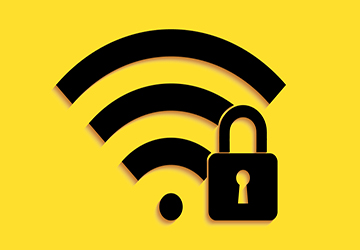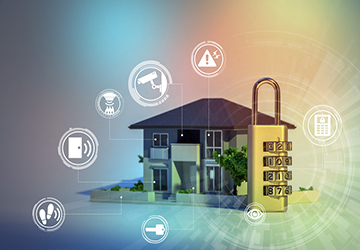How to Safeguard Your Smart Home: Top 10 IoT Security Tips
More devices are connected to the internet than our relationships are. Whether it's your cell phone, Alexa, laptop, or even your car and public transportation, all these devices and appliances have an effortless communication system. The passage of information through these devices has led to the creation of the "Internet of Things" or IoT ecosystem, one of the most incredible inventions of our generation.
Unfortunately, if a single component is lost, the entire system will become vulnerable because all things are connected to you. Cybercriminals and hackers can take all your information if you don't protect it; what are you supposed to do then?
What is the importance of safeguarding your connected devices via IOT?
The greater the number of devices associated with you, the greater the number of intriguing types you will have access to or a vantage point to hack your personal information. A simple app installed without intention may have allowed access to criminals. Consider some every day but misconstrued situations that you may not have considered dangerous.
Do you or your non-tech-savvy family members understand the necessity of specific permissions and the apps that can break their privacy?
Criminals or hackers can observe your daily activities to know when to intrude. For example, your temperature at home differs from your temperature when out.
A simple error can facilitate the intrusion of ransomware into your system; this can lead to a halt in your life if all connected devices are involved.
What is to be done, and how can you preserve your information and internet-connected devices?

Intelligent home security tips to protect your home!
Let's discuss some fundamental principles that may necessitate initial effort but which will allow you to simplify your life with the IoT and enjoyable devices.
1. Alter the name of your Wi-Fi network and stop broadcasting publicly.
Hackers require creating a device and introducing a specific weapon to commit a crime. Thus, the first thing you should do when receiving a new internet connection is to alter the name or request that the IT person do so. Secondly, please don't allow the device to broadcast or stop its SSID broadcasting. Only allow people you know to use it.
Following these simple steps will facilitate the blocking of hackers and the attempt to find your device and address any potential issues.
2. Understanding your network and who or what is associated with it
You can seek the help of a professional or an IT specialist to ensure every device connected to the internet via your device is adhering to protocol. Each machine is categorized by its type and is permitted the appropriate privileges.
Research into your own devices has revealed issues with security and bugs and how to utilize them in a limited capacity.
3. Permit Devices to Self-install Security Patches
Recently, companies have begun to allow users to choose between receiving updates via OTA, such as OS upgrades, or having the latest security features and bug fixes. Now, you can make different devices automatically update security patches as soon as they are received. Conversely, OS updates can be scheduled to update during off hours or only when you allow them to be updated. Ensure you have security patches that will automatically download and install.
4. Solid password and permission verification
After companies recommend creating a strong password, it's crucial to do so because it's tough for criminals to hack. Additionally, create a different password than you have on other computers or accounts. One spill can threaten to undermine your ecosystem.
You also need to grant permission for each device connected to your network; this will only be given once. Constantly re-inquire the consent, which should be said once every month, to maintain its freshness.
5. Establishing a guest network
Adding a router to your primary device or a completely new device for family and friends can prevent your devices from being compromised because you have no idea which one of their devices is infected. Remove their access to the system and their login information when they are absent or at least once per week.
Increase the security protocols for the guest network, preventing them from hacking your home network.

6. Increase the security of your Wi-Fi network
Unfortunately, most homeowners utilize the typical encryption method to avoid the complexity of establishing more advanced techniques. Use the services of your Internet service provider or technical specialist, and configure your home network with WPA3 encryption. Typically, WPA2 is also necessary and encodes every communication that passes through your devices.
7. Recreate default configurations
It's irrelevant if you've accomplished everything necessary for your internet-connected device or wireless router; if you still need to alter the configuration of new devices from the OEM setting, they are still susceptible to attacks. Every new device you configure will have its protocol, so ensure they are in sync.
8. Disable features that are unnecessary or are required for the task
There are numerous configurations in your internet router or other devices that you don't utilize for active or efficient communication. These shared traits are more pertinent to companies than to homes. Open serial ports, untrained radio links, and TCP/UDP ports can be turned off.
9. Maintain Your Information Today
Your device is part of many technological advances that need to be regular. Join a forum or official security websites to learn the latest network protection methods. New methods of hacking may become apparent that you are vulnerable to.
10. Use Firewalls or Antivirus Software
Many devices are now equipped with a pre-emptive security system, which precludes malicious attacks. Even if your router has a built-in firewall, install and configure it for other devices to protect and protect your information.
Safe and dependable IoT, as well as Easy of Life.
It's clearly understood that most devices we possess augment our quality of life and facilitate our connection. However, a few minutes of connection and ease of use should lead to a different outcome. Now that everything is online, even financial transactions, protect your smart home by following these critical tips.











